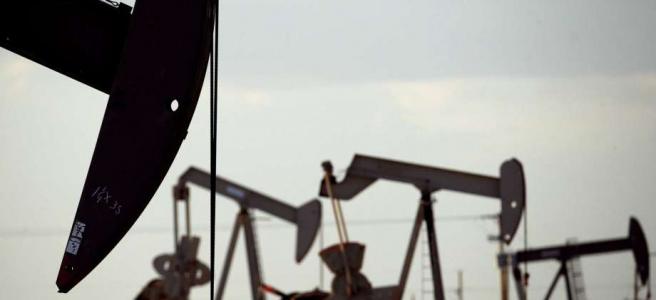
Morgan Lee, Associated Press | 10/2/19
In this April 24, 2015, file photo, pumpjacks work in a field near Lovington, N.M. Satellite imagery and supercomputing capabilities will be used to detect and monitor methane pollution from major oil and natural gas installations in New Mexico, under an informal partnership announced Thursday, Sept. 19, 2019, between state regulators and private-sector data cruncher Descartes Labs.
SANTA FE, N.M. (AP) — Methane sensors will be put on planes, trucks and atop towers in the West Texas and southeastern New Mexico desert in a new effort to gauge the extent of greenhouse gas emissions from surging oil and natural gas production, advocates with the Environmental Defense Fund announced Wednesday.
The yearlong project in the Permian Basin petroleum production region involves researchers from Pennsylvania State University and the University of Wyoming, and low-flying planes from a Colorado-based atmospheric research company.
The new methods will be used because traditional estimates of methane emissions have not kept up with the rapid expansion petroleum exploration in the area spanning roughly 85,000 square miles (220,000 square miles), said Environmental Defense Fund Regulatory Affairs Director Jon Goldstein.
The Permian Basin is by many measures the country’s most active basin for oil and gas development, he said.
“What we don’t have is a tremendous amount of information about is what that means in terms of emissions and waste,” Goldstein said.
Data from the study organized by the Defense Fund will be made public while research is still in progress. Results will include a map of emissions across the region. Organizers expect scientific work to be submitted for peer review.
The goal is to produce useful measurements for the oil and gas industry as it strives to reduce waste as well as for regulators and observers who are concerned about climate pollutants, Goldstein said.
Methane, the main component of natural gas, frequently leaks or is intentionally released during drilling operations. It traps far more heat in the atmosphere than carbon dioxide, doing 25 times the damage over the long term despite surviving for less time, according to the EPA.
On New Mexico’s side of the Permian Basin, state regulators are developing new oilfield rules to limit methane emissions, even as the as the administration of President Donald Trump reduces federal oversight.
Democratic New Mexico Gov. Michelle Lujan Grisham already has sought technical suggestions from the oil industry and hopes to use satellite data to analyze air pollution with the help of local supercomputing company Descartes Labs.
Read more: https://www.chron.com/news/texas/article/Methane-study-to-deploy-planes-towers-in-Texas-14486987.php

